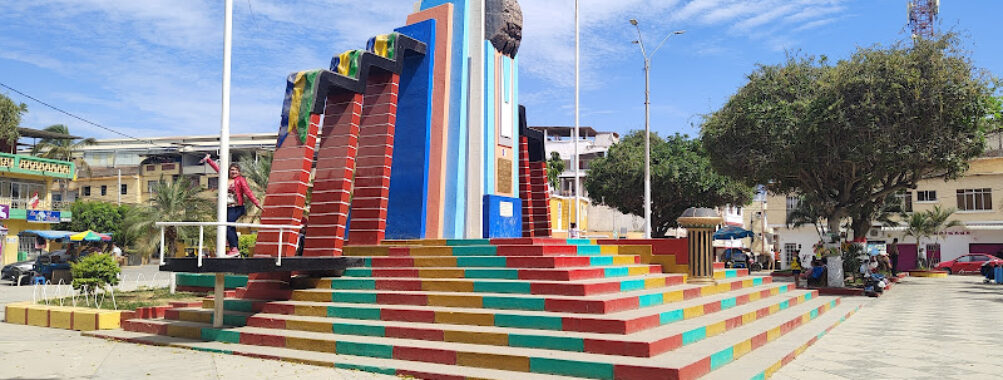
Tumbes
Table of Contents
Description
Alright, so Tumbes is this intriguing little city perched right on the banks of the Tumbes River in northwestern Peru. It’s the capital of the Tumbes Region, and also the province and district, which kinda makes it the big boss around here. What’s neat is that it sits pretty close to the Ecuadorian border, giving it a unique cross-cultural vibe that you don’t find everywhere. With just over 110,000 folks calling it home as of a few years back, it’s not a sprawling metropolis, but it’s lively enough to keep you interested without feeling overwhelming.
Now, if you ask me, Tumbes has this laid-back charm that’s a bit different from the usual tourist spots in Peru. It’s not about Machu Picchu-level crowds or flashy city life — it’s more about soaking in the coastal atmosphere, fresh seafood, and a taste of local life that feels genuine. The city’s airport, Cap. FAP Pedro Canga Rodriguez, makes getting there pretty straightforward, especially if you want to skip the long bus rides.
What really caught my attention is how Tumbes balances being a gateway to some incredible natural wonders while still maintaining its own identity. You can dive into mangrove forests, explore wildlife reserves, or just chill by the river and watch local fishermen do their thing. It’s got this raw, unpolished feel that’s honestly refreshing in a world full of overhyped destinations.
Key Features
- Strategic location near the Ecuadorian border, offering cultural blends and easy cross-border trips
- Access to stunning natural reserves like the Tumbes Mangroves and Cerros de Amotape National Park
- Small but vibrant city life with local markets, fresh seafood eateries, and riverfront strolls
- Cap. FAP Pedro Canga Rodriguez Airport connects Tumbes to major Peruvian cities
- Rich biodiversity including unique bird species and marine life in surrounding ecosystems
- Gateway to pristine beaches and ecological tourism spots less crowded than Peru’s typical tourist hubs
- Warm tropical climate with a mix of coastal and jungle influences
Best Time to Visit
Picking the right time to visit Tumbes can really make or break your experience. Honestly, the dry season from May to November is the sweet spot. You’ll get sunny days, lower humidity, and fewer bugs—trust me, that’s a game changer when you’re out exploring mangroves or hiking nearby reserves. Plus, the weather’s just more comfortable for beach days or wandering the city streets without melting into a puddle.
On the flip side, the wet season, which runs roughly from December through April, brings heavy rains and a bit of a jungle vibe—lush and green but also muddy and sometimes a bit inconvenient for travel plans. That said, if you’re into bird watching or want to see the landscape at its most vibrant, the rainy months have their own charm. Just pack a good rain jacket and be ready for sudden downpours.
How to Get There
Getting to Tumbes isn’t a headache, which is a refreshing change from some of Peru’s more remote spots. The easiest way is flying into Cap. FAP Pedro Canga Rodriguez Airport. Flights from Lima or other Peruvian cities are fairly regular, and the airport is small enough to avoid the usual airport chaos. From there, taxis or local transport can whisk you into town in a matter of minutes.
If you’re feeling adventurous or on a tighter budget, buses and colectivos from larger cities like Piura or even from Ecuador’s border towns can get you there. The bus rides might take longer, but they offer a chance to see the countryside and interact with locals—a bonus if you’re into that kind of immersion. Just be prepared for bumpy roads and occasional delays; it’s all part of the experience.
Tips for Visiting
Here’s the deal: Tumbes isn’t your typical tourist trap, so a little preparation goes a long way. First off, don’t expect all the tourist infrastructure you might find in Lima or Cusco. Some spots might feel a bit rustic, but that’s part of the charm, right? Pack light but smart—think mosquito repellent, sunscreen, and comfortable shoes for exploring mangroves or walking along the riverbanks.
Also, try to learn a few basic Spanish phrases. English isn’t widely spoken here, and locals really appreciate the effort. It’ll open doors to better conversations, maybe even some invites to local gatherings if you’re lucky. Speaking of locals, the seafood here is a must-try. Fresh ceviche and grilled fish are staples, and you won’t regret indulging in the flavors that come straight from the ocean.
One little nugget from my own travels: don’t rush the mangrove tours. Take your time, listen to the guide, and keep your eyes peeled for wildlife. I once spotted a rare bird I’d never seen before just because I stayed quiet and patient. Also, if you want to cross over into Ecuador for a day trip, it’s doable but keep your documents handy and check the latest border regulations—things can change quickly.
Lastly, don’t forget to carry some cash. While credit cards are accepted in bigger places, smaller vendors and markets often prefer soles or dollars. And if you’re planning to explore nature reserves, bring some snacks and water because amenities can be sparse.
All in all, Tumbes offers a slice of Peru that’s a bit off the beaten path but filled with genuine experiences. It’s perfect if you want to mix nature, culture, and a bit of adventure without the crowds breathing down your neck. Give it a shot—you might just find yourself coming back for more.
Location
Places to Stay Near Tumbes
Find and Book a Tour
Explore More Travel Guides
No reviews found! Be the first to review!